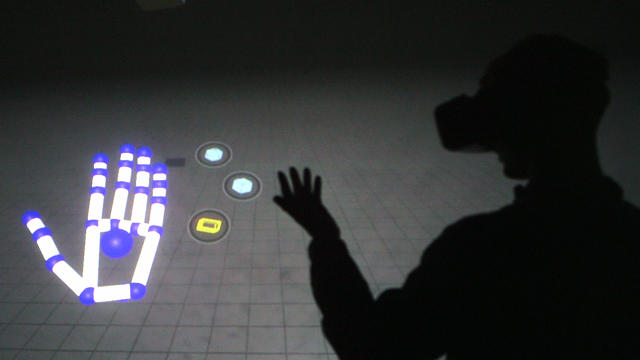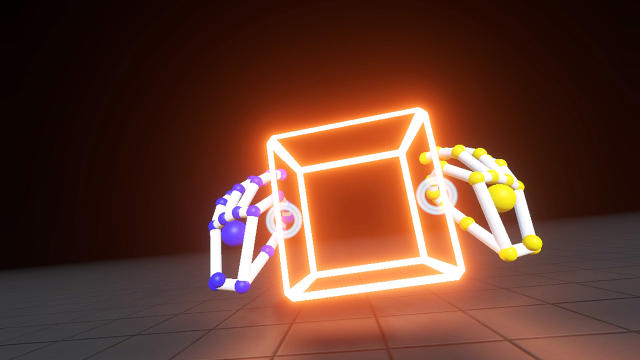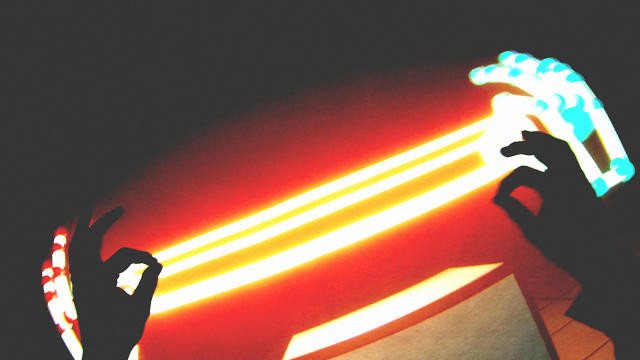New technology Brings Finger-degree Precision To VR
virtual truth is a superb expertise for hanging customers into immersive experiences, where they may be able to seem to be and play throughout them. however even supposing there are some tools for incorporating arms into those experiences, it’s by no means been imaginable to bring users’ fingers into the image.

unless now. lately, bounce motion, a San Francisco startup that has for years been engaged on movement control expertise, unveiled Orion, its new digital truth hardware and device platform that for the primary time provides customers the power to keep an eye on a VR surroundings with finger-stage precision.
at the start, jump motion is making Orion available to developers excited by incorporating the expertise into purposes for high-finish, highly effective VR hardware just like the Oculus Rift or HTC Vive. but later this 12 months, the corporate mentioned, it expects to have Orion know-how embedded directly into cellular VR headsets. it is not pronouncing who its first partners will likely be.
“we predict that is the point where tracking [in VR] has reached the level the place it if truth be told lives up to the imaginative and prescient we’ve been pursuing for no less than 5 years,” says jump motion CEO Michael Buckwald.

the discharge of Orion is a huge step for leap motion. the corporate launched with huge fanfare—and funding—in 2012, in large part in response to the promise if its soar controller, which gave builders the ability to build highly correct hand motion regulate into their purposes. but the jump by no means lived as much as that promise. during the last couple of years, the corporate has been focusing on VR as the apparent next step for the soar.
builders had already been on board, with many jerry-rigging the soar onto VR headsets like the Oculus Rift in order to convey customers’ palms into VR experiences. however as a result of Oculus is making its own expertise for that objective—its touch controllers—and because the Vive and Sony’s psVR additionally provide that technology, it appeared leap was getting left at the back of.

The Orion upends that equation. not one of the other applied sciences be capable to see users’ fingers, whereas Orion can inform precisely what finger somebody is the usage of, bearing in mind subtle motions like pinching, or selecting something up with simply a few fingers. it will possibly tell the adaptation between users’ left and proper arms, and also can distinguish between the hand and, say, a table that it’s resting on.
that suggests, says bounce motion cofounder and CTO David Holz, that developers will have the ability to write instrument that is familiar with which fingers are getting used and what they’re doing.

In a Orion demo, Holz showed just how much regulate the technology offers. First, a person can create blocks just via striking two pinched fingers from each hand collectively after which pulling outward. Then they might decide up the blocks with a thumb and index finger and situation one atop any other, piling them better and higher. The demo additionally allowed a consumer to pick out up and throw blocks, flick them with a finger, or even seize one and swing it like a baseball bat.

where Orion may in point of fact shine is in mobile headsets. for instance, there’s no simple technique to deliver a person’s palms into an experience on Samsung’s equipment VR. One firm, Pantomime, has give you a method to do it, but it’s sure that if Orion is embedded within the hardware, it is going to be rather more seamless. however nonetheless, there’s no assure bounce movement is working with Samsung.
Holz thinks that Orion gained’t exchange technology like the Oculus contact, which is good for issues like Oculus’s Medium software, a 3D portray and sculpting software, however fairly increase it.
“If a controller is trying to be a hand, it’s going to be a bad hand,” he says. “If a hand is attempting to be a controller, it received’t necessarily be a good controller.”
quick company , learn Full Story
(52)














